President Biden sent the Senate his first nine judicial nominees on April 19. He announced a tenth nominee (D.C. Superior Court judge Florence Pan) with the other nine on March 30. Pan would fill a district court vacancy that will exist if the Senate confirms D.C. District Judge Ketanji Jackson, whom he has nominated to the court of appeals. This sequence has occurred amid speculation that Jackson may be his promised Black woman Supreme Court appointee if a Court vacancy occurs.
Biden put forth a substantial number of nominees earlier than any recent predecessor. George H.W. Bush in late February submitted five left-over Reagan nominees but didn’t submit nine nominees until September 13. By mid-April, Obama had submitted three and Trump one but neither reached nine nominees for several months.
Table 1: Pace of nominees in first year
| First nominees: Date (and number) | Date reached 9 nominees | |
| Reagan, 1981 | July 1 (1) | July 29 |
| H.W. Bush, 1989 | Feb. 28 (5) | Sept. 13 |
| Clinton, 1993 | Aug. 6 (13) | Aug. 6 |
| W. Bush, 2001 | May 9 (10) | May 9 |
| Obama, 2009 | Mar. 17 (1) | July 8 |
| Trump, 2017 | Mar. 21 (1) | June 7 |
| Biden, 2021 | April 19 (9) | April 19 |
(Had not Trump and the Senate put Justice Barrett on the Court eight days before the November election, Biden might have submitted an early Supreme Court nominee to fill Justice Ginsburg’s vacancy, akin to Trump’s early 2017 nomination of Neil Gorsuch to the vacancy to which Obama nominated Merrick Garland in March 2016.)
Diversity in the judiciary
Biden’s nominees reflect his promise to diversify the face of the judiciary. None are white; one of the two men is evidently the first Muslim-American to be nominated to a life-tenured federal judgeship; his three African-American women circuit nominees exceed by three all of Trump’s African-American appellate nominees. (Two other groups said they were “‘extremely disappointed’ that just one of the 11 nominees was Latinx”.)
Early nominees, though, hardly ensure a vigorous four-year appointment record. In his first 100 days, Obama sent three nominees to the Senate. In his first 100 days Trump only sent one, but in four years, Trump appointed 231 appellate and district judges compared to Obama’s 168.
Prospects for a ideological makeover
Biden still faces the landscape that I described in early March. Republicans in the evenly divided Senate will probably resist his picks as zealously as Democrats voted against Trump’s nominees. And he has fewer vacancies than three of his four of most recent predecessors.
Table 2: Vacancies at the end of April, first year
|
1981 Reagan |
1989 H.W. Bush |
1993* Clinton |
2001 W. Bush |
2009 Obama |
2017 Trump |
2021** Biden |
|
| Courts of Appeal | 8 | 11 | 17 | 32 | 15 | 20 | 7 |
| District Courts*** | 37 | 34 | 92 | 70 | 54 | 103 | 67 |
| TOTAL | 45 | 45 | 109 | 97 | 69 | 123 | 74 |
| % of judgeships | 7% | 6% | 13% | 11% | 8% | 14% | 9% |
* Uscourts.gov 1993 vacancy data available only for January. Vacancies were greater in May.
** As of April 27
*** Includes Court of International Trade
Over four years, however, Biden can bolster the Democratic-appointee majority on the district courts that Trump left him. But Democratic appointees are a minority of active-status appeals court judges. Biden can increase the proportion but will not match Trump’s 54 appellate appointments, who moved Republican appointees from 40% to 54% of the 179 appellate judgeships.
“Reform” the Court?
During the campaign, groups pressed Democratic candidates, including the presidential candidates, to add seats to the Supreme Court to counter Trump’s appointees, whom they say occupy seats that Republicans filled illegitimately. Biden deflected Republican “pack-the-Court?” questions by promising to appoint a study commission. But Biden’s April 9 commission announcement did not stir the Democratic base as did his first slate of nominees. Expansion proponents dismissed it as irrelevant.
Biden clearly does not share some other Democrats’ enthusiasm for Court expansion. He has long criticized Franklin Roosevelt’s Court-expansion proposal, and rejected Court expansion in October even as he promised to appoint the commission. The commission’s charge, announced late on Friday April 9, was modest, asking for analysis, not recommendations, with an emphasis on the appointment process. The closest possible reference to enlarging the Court was a request to analyze the “debate for and against Supreme Court reform, including an appraisal of the merits and legality of particular reform proposals” (which could also include items such as term limits, ethics regulation, and jurisdiction).
Nevertheless, opponents are depicting Biden as either the Court-packer-in-chief or the packers’ principal enabler (or tool). Senate Minority Leader McConnell said the “commission to study packing the Supreme Court . . . fits squarely within liberals’ years-long campaign to politicize the Court, intimidate its members, and subvert its independence” and is “another sign of the Far Left’s influence over the Biden administration.” Although chances Congress will expand the Court are nil—even if Biden supported it—the issue may well be chum in the water used to attack his judicial nominees.
Some Congressional Democrats are engaged in a side show that may further roil the waters. Their Judiciary Act of 2021 would expand the court to 13 to match the number of judicial circuits—just as there were nine circuits in 1869 when Congress set the Court at that number. A 13-justice court, as I described last year would be larger than any U.S. state or common-law national high court. House Judiciary Committee chair Nadler’s historical arguments in support of the bill would flunk a federal courts class. For example, it’s true that 19th century legislators “pegged the size of the Supreme Court to the number of judicial circuits” but not, as Nadler assumes, for workload reasons but because each circuit, at least technically, needed a justice to sit on its several trial courts. The 19th century legislators he credits with “eminent sense” actually presided over what leading scholars have called “the nadir of federal judicial administration” (quoted here).
To sum up, Biden is off to a good judicial staffing start in his first 100 days and can look for a modest—albeit not Trump-like—impact. It’s anyone guess how the faux controversy over his modest court commission will overshadow the nomination and appointment process.
Data for this post come from the “History of the Federal Judiciary” page of the Federal Judicial Center (fjc.gov), uscourt.gov., and my own data sets.
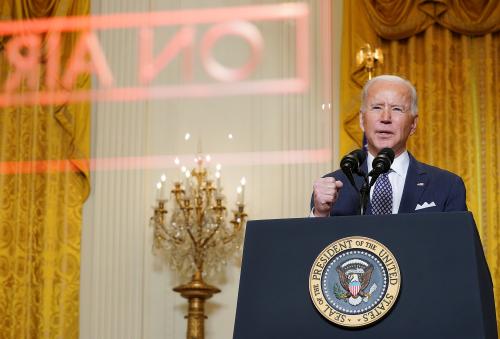
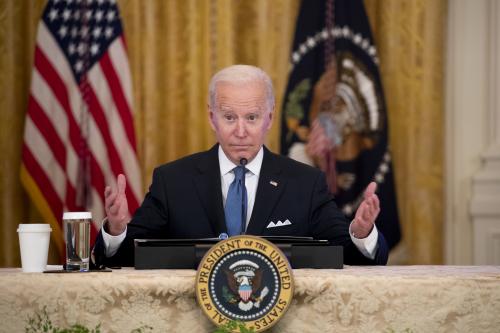
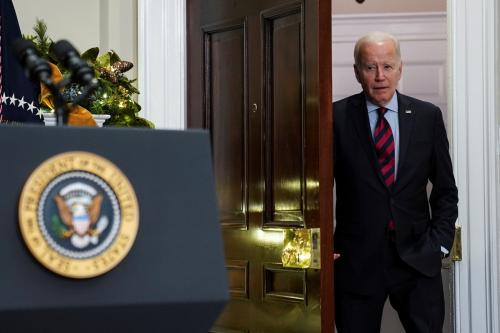

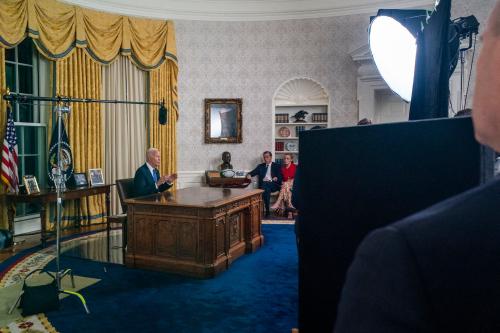
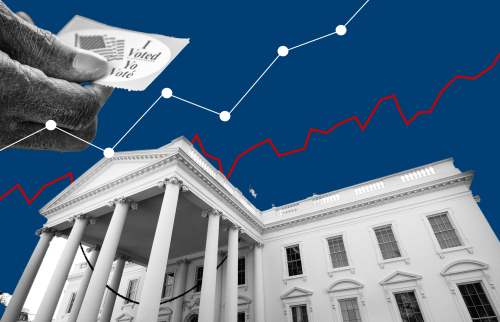
Commentary
Biden’s first 100 days and the federal judiciary: Prompt action and a Supreme Court controversy
April 27, 2021